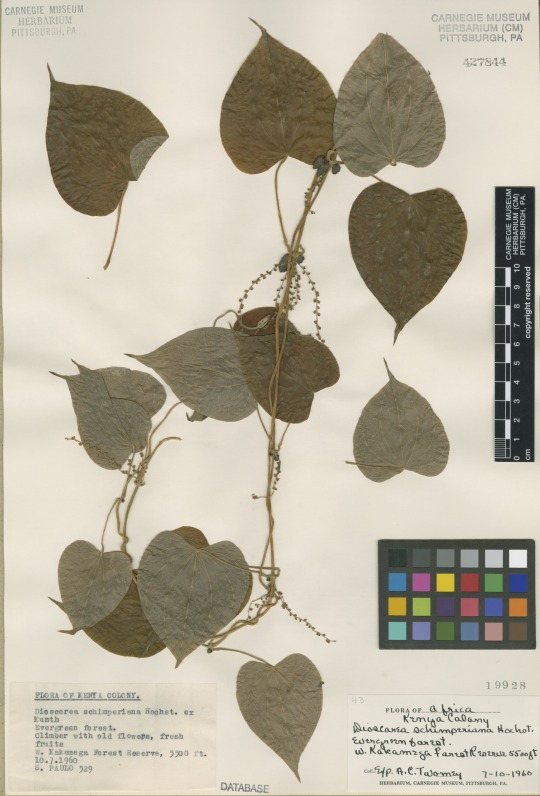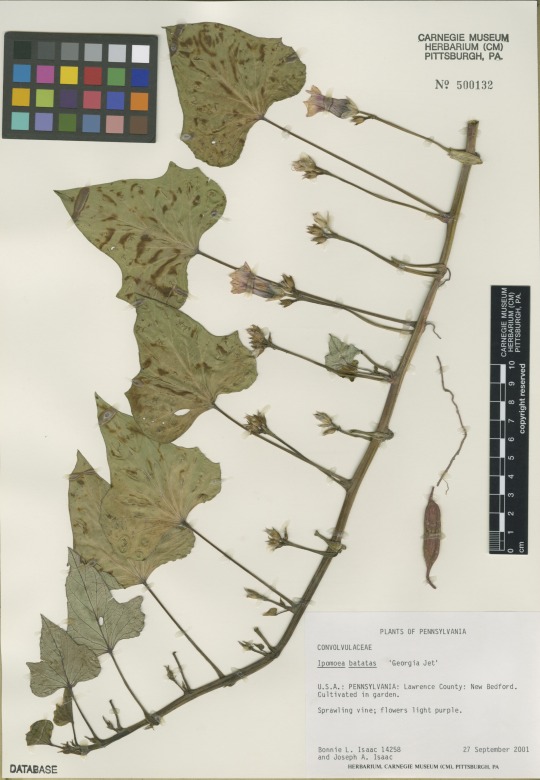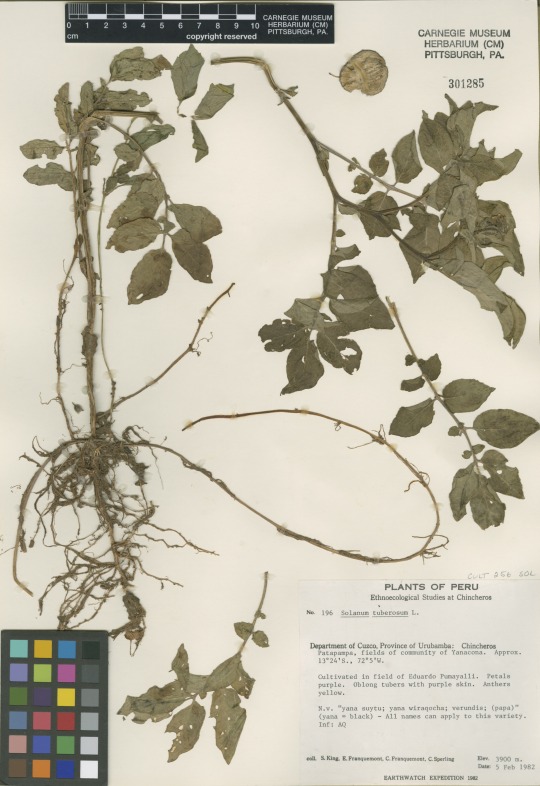by Mason Heberling

What you know as yams are most likely not actually yams. In fact, your “classic” potatoes, sweet potatoes, and yams are all in different plant families. However, they all are widely cultivated for their nutritious starchy belowground plant structures called “tubers.” Tubers function as storage organs for the plants, providing energy for regrowth (the “eyes” or sprouting buds of your potatoes when they sit in your kitchen for too long). Potatoes and yams technically have modified belowground stems (“stem tubers”) while sweet potatoes have “root tubers.”

Yam is a common name for several vine species in the genus Dioscorea (plant family: Dioscoreaceae). They are monocots (related to grasses and lilies). Yams are widely cultivated worldwide, especially in West Africa, where 95% of the crop is harvested. Yams can be stored for very long periods of time, making them an important crop for seasons when food is in short supply. Yam tubers can be as large as five feet long!

Sweet potatoes refer to a vine species (Ipomoea batatas) in the morning glory family (Convolvulaceae). This species is likely what is on your Thanksgiving dinner table. In the United States and Canada, sweet potatoes are often (confusingly) referred to as “yams.” But sweet potatoes are not even closely related to yams. As such, the USDA requires any label with “yam” to also include “sweet potato.” So why are sweet potatoes sometimes confusingly called yams?! Well, this naming probably dates back to colonial times when slaves from Africa noted the similarities between some varieties of sweet potatoes to yams in Africa.

And last – the “classic” potato, Solanum tuberosum. Potatoes belong to the nightshade family (Solanaceace), which also includes many other important crops like peppers, tomatoes, tomatillos, eggplant, tobacco, and more. Critical to the world’s food supply, potatoes are the fourth most farmed crop. Potatoes are only distantly related to sweet potatoes. They are also called “spuds,” which probably originated centuries ago from a term for a spade used to dig holes to plant potatoes. Having been cultivated for centuries, there are thousands of potato varieties worldwide. The cultivated species was domesticated from wild relative potato species in South America (Peru) 7,000 – 10,000 years ago. Interesting note: discoveries on the origin of potatoes was based on DNA from 200-year-old herbarium specimens! Similarly, the origin of the Irish Potato Famine (caused by potato late blight from a fungal pathogen) was also discovered using fungal DNA extracted from 160+ year old herbarium specimens!
For more on Irish potato famine research.
For more on origins of European potato.
Mason Heberling is Assistant Curator of Botany at Carnegie Museum of Natural History. Museum employees are encouraged to blog about their unique experiences and knowledge gained from working at the museum.
Botanists at the Carnegie Museum of Natural History share digital specimens from the herbarium on dates they were collected. They have embarked on a three-year project to digitize nearly 190,000 plant specimens collected in the region, making images and other data publicly available online. This effort is part of the Mid-Atlantic Megalopolis Project (mamdigitization.org), a network of thirteen herbaria spanning the densely populated urban corridor from Washington, D.C. to New York City to achieve a greater understanding of our urban areas, including the unique industrial and environmental history of the greater Pittsburgh region. This project is made possible by the National Science Foundation under grant no. 1801022.
Related Content
Callery Pear from October 11, 1979
Thanksgiving and Nutritional Mineralogy
Carnegie Museum of Natural History Blog Citation Information
Blog author: Heberling, MasonPublication date: November 26, 2018
